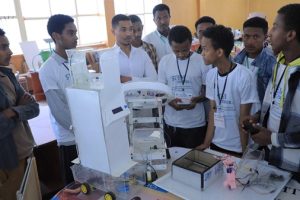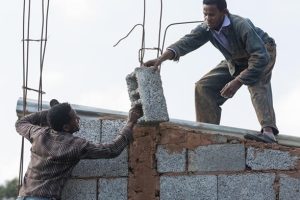BY GIRMACHEW GASHAW
Ethiopia is a country well known for hosting the largest number of refuges. The nation has a longstanding history of hosting refugees; and it is one of the countries that have progressive refugee policies in the region. The country, though has its own challenges, its door is always open to refugees and asylum seekers flowing to it seeking its protection.
According to UNHCR data launched in May 2021, Ethiopia is the third largest refugee-hosting country in African sheltering 844,589 registered refugees and asylum-seekers as of 31 March 2022. The overwhelming majority originate from South Sudan, Somalia and Eritrea.
In the same manner, a report launched by Concern Worldwide, an international humanitarian organization that strives for a world free from poverty, fear and oppression, has also put Ethiopia amongst the 10 largest host countries for refugees in 2023.
Reportedly, Ethiopia is host to over 867,000 refugees. Most have escaped conflict in nearby South Sudan, Somalia, Sudan, and Eritrea. Presently, following the peace and security threats occurred in the Somalia, 100,000 thousands of Somalis are flowing to Dollo Ado Refuge Camp, an area located in the south-eastern part of Ethiopia bordering Somalia to the east and Kenya to the south.
Especially in the past five few weeks, the number of people flocking to this specific Camp is increasing. According to WHO in Ethiopia, since the beginning of February 2023, approximately 100,000 refugees, mostly women, children, unaccompanied minors, and people who are wounded or sick have reportedly arrived in Ethiopia from Somalia and are in dire need of humanitarian assistance. The Organization, to increase access to essential health services for refugees and the host population in the Dollo Zone of Ethiopia’s Somali Region, and lessen their burden is speeding up its health response.
Dollo Zone, where the refugees are currently hosted, is presently affected by the worst drought in over 40 years in the greater Horn of Africa following five consecutive failed rainy seasons.
The severe health impact of the drought has left thousands of households’ food insecure, an increase in children with acute malnutrition, high population movement and displacement of the pastoralists in search of water, and a heightened risk of disease outbreaks.
However, WHO-Ethiopia, in collaboration with partners, has delivered 12 interagency emergency health kits and severe acute malnutrition treatment kits to all the health facilities in Dollo Zone. WHO has also redeployed staff and has brought onboard more technical experts in response to the health crisis in the region.
“We will continue to advocate for deployment of more healthcare personnel and medical supplies to support the health facilities as they deal with multiple health emergencies,” says Dr Nonhlanhla Dlamini, Acting WHO Representative to Ethiopia. “There is the need for increased partner presence and robust coordination mechanisms to support the government’s response in a well-coordinated approach.”
The Representative also highlighted the unfavorable influence the influx will yield on Ethiopia. “The current influx of refugees from Somalia into the Somali region of Ethiopia puts an enormous strain on the humanitarian response, which is already stretched by concurrent challenges.
To provide relief and humanitarian assistance to refugees and host communities, an estimated amount of 101 million USD is needed for the next nine months. WHO will need 5.86 million USD to provide health assistance and ensure the continuity of basic health services for affected communities in the Dollo Zone of Ethiopia’s Somali Region. Dollo Ado, located in southeastern Ethiopia and close to the border with Somalia and Kenya, has the second highest concentration of refugees in Africa.
The Ethiopian Herald March 23/2023





